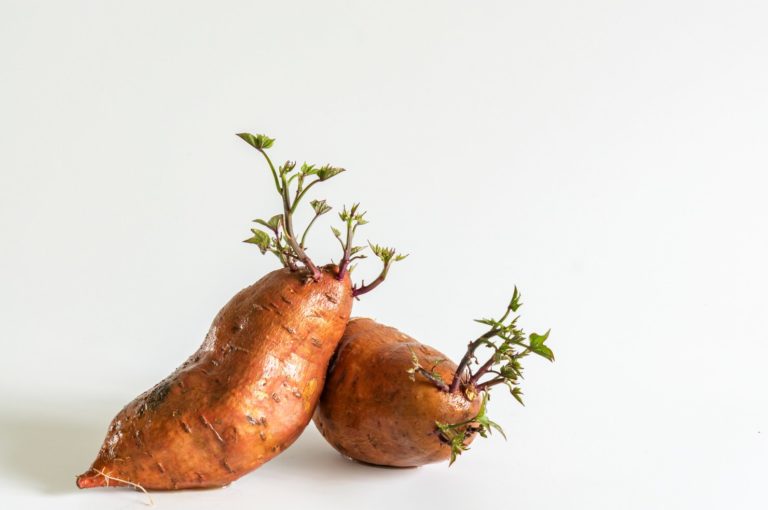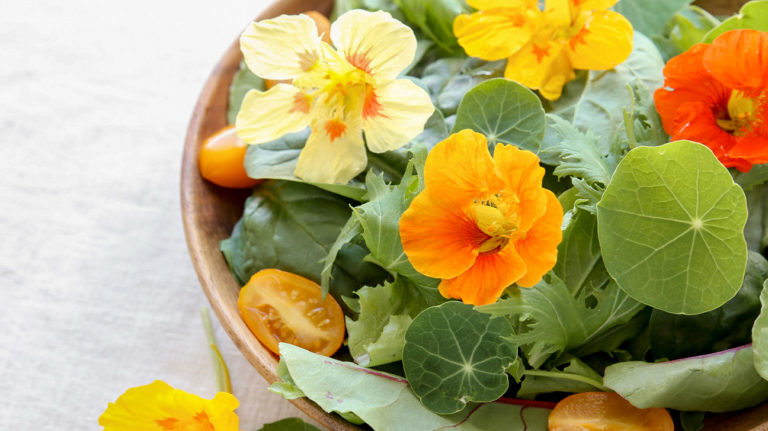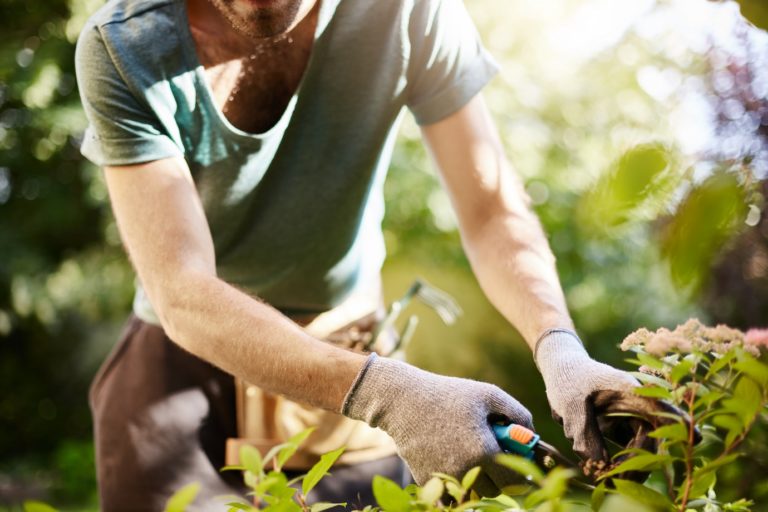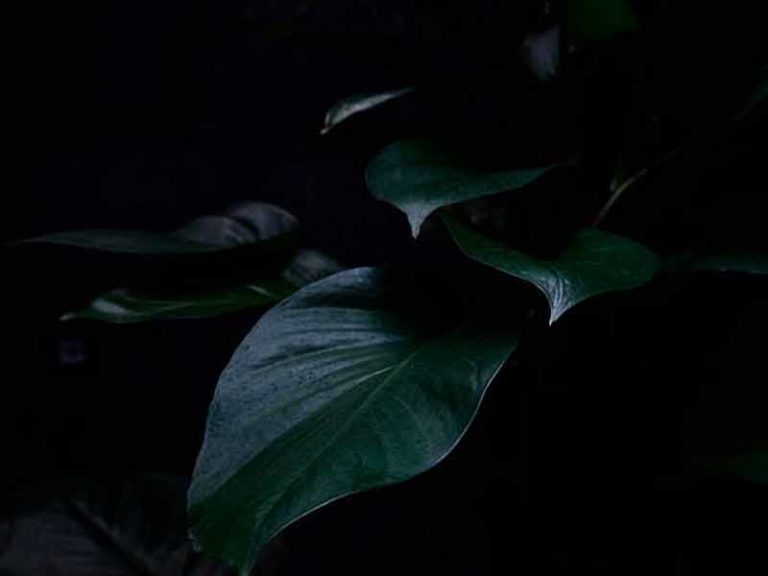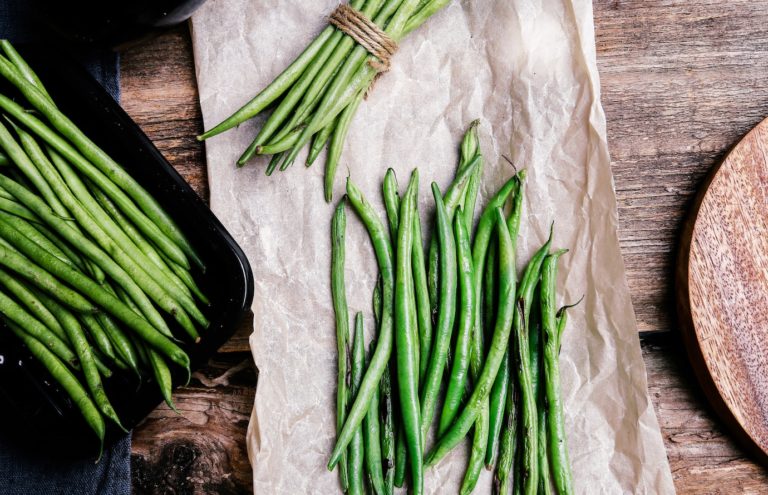How to Grow White Pumpkins
Pumpkins are native to North America and have been cultivated for thousands of years. Today, pumpkins are grown all over the world. The top pumpkin-producing countries include the United States, India, China, and Mexico.
Pumpkins, squash, and gourds are all members of the Cucurbitaceae family. The three share many similarities, but there are also some key differences. Pumpkins are generally more giant than squash and gourds and have thicker walls. The flesh of a pumpkin is also more orange than that of a squash or gourd.
What is a white pumpkin, and where does it come from?
A white pumpkin is a type of pumpkin that has pale-colored skin. White Ghost pumpkin is the most popular variety of white pumpkin. It is named after its white skin, which is said to resemble a ghost.
White pumpkins are often used for decoration, adding a unique touch to Halloween and Thanksgiving displays. However, People love white pumpkins because of their beauty. It was first produced in 2004 by the Great White Pumpkin Company.
One big difference between white and traditional orange pumpkins is that white pumpkins are not as famous for cooking. This is because their flesh is not as orange and thus not as flavourful.
When to plant pumpkin seeds?
You can plant pumpkin seeds in early spring as soon as the ground is thawed and can be worked. You’ll want to sow the seeds about an inch deep in well-drained soil and space them about four to six inches apart. Once the seedlings have sprouted, thin them out so that there are only two or three plants per hill. Pumpkins need a lot of room to grow, so give them plenty of space.
Pumpkins are heavy feeders, so make sure to fertilize them regularly. A side dressing of compost or manure every few weeks will help the plants thrive. Water pumpkins deeply and evenly, especially during dry spells. Pumpkins need about an inch of water per week. See our guide about When is the best time to water your garden.
Pumpkin growing stages
Pumpkin plants are typically started from seed in the spring. After the seedlings have grown and the weather has warmed up, they are transplanted into their final garden spot. Pumpkin plants need a lot of room to spread out, so they are usually planted in hills. Each hill should have 4-5 plants. Once the plants start to vine, they need to be given support – either by being trained up a fence or allowed to sprawl on the ground. Male flowers will appear first, followed by female flowers.
Female flowers have a small pumpkin at the base of the flower. If pollination occurs, the tiny pumpkin will start to grow. Pumpkins are ready to harvest when they are a deep orange color, and their skin is hard. Cut the pumpkin off the vine to harvest, leaving a few inches of stem attached. Pumpkins can then be stored in a cool, dry place for several months.
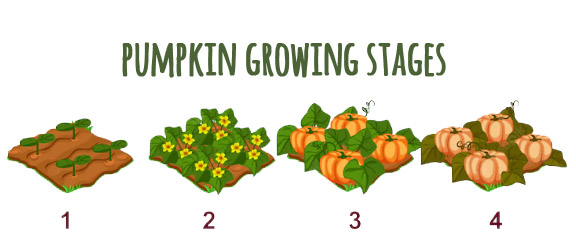
Growing pumpkins in small spaces
For those with limited space, growing pumpkins can seem like an impossible task. However, with some planning and the right variety of pumpkins, it is possible to grow these gourds in a small garden or even in large pots.
One of the key considerations is how much room the pumpkin will need to reach full size. For miniature varieties, such as Munchkin or Baby Boo, two to three square feet of space is sufficient.
With proper care, even those with limited space can enjoy the satisfaction of harvesting their very own pumpkins. Six to eight square feet per plant is ideal for more giant pumpkins, such as Jack-Be-Little or Hooligan. Another important factor is soil fertility. Pumpkins need plenty of nitrogen-rich compost to produce large fruits, so be sure to amend the soil before planting.
Growing pumpkins vertically
Pumpkins are typically grown on the ground, but if you have limited space, you can also grow them vertically. To do this, you will need to provide support for the pumpkin vines to climb. You will also need to ensure that the pumpkin gets plenty of sun and water. A trellis or fence are both excellent options.
How to grow white pumpkins in your garden
Though they may not be as popular as their orange cousins, white pumpkins are a beautiful addition to any autumnal display. Seasoned gardeners and newcomers may wonder how to grow white pumpkins in their patches. Here are a few tips on how to successfully grow white pumpkins.
Make sure to start your seeds indoors about six to eight weeks before your area’s last average frost date.
- Fill a seedling tray with moistened potting mix and place two or three pumpkin seeds on top.
- Cover the seeds with another layer of potting mix and water them gently.
- Keep the tray in a warm, sunny spot and wait for the seeds to germinate.
Once the seedlings have sprouted, thin them out so that only the most potent plant remains in each pot. When it’s time to transplant them outdoors, choose a sunny spot with well-draining soil. Space the plants about four feet apart and water them deeply. Be sure to watch for pests and diseases, as white pumpkins are particularly susceptible to powdery mildew.
Must consider your climate first
If your area has a climate where pumpkins can grow, you should have no problem growing white pumpkins in your garden. You should check your local climate and see if it is suitable for pumpkins before you start planting.
Decide on the right variety
There are wide different varieties of white pumpkins. You should decide on the right one for your garden. Consider the pumpkin’s size, shape, and growth habit before you decide on a suitable variety.
Plant in well-drained soil
Pumpkins need well-drained soil to grow correctly. If your soil is too heavy or poorly drained, your pumpkins will not be able to grow properly. You should add organic matter to your soil to improve its drainage. Best Mulch for a Vegetable Garden
A sunny location is essential
Full sunlight is vital for the growth of pumpkins. If your garden does not get full sun, you should consider planting your pumpkins in a sunny location.
Water regularly
Well, not only for pumpkins, water is vital for every plant. Regular watering is necessary for pumpkins, especially during the hot summer months. You should water your pumpkins deeply and evenly to ensure their proper growth.
Protect your plants from pests
Pests can be a significant problem for pumpkins. You should take measures to protect your plants from pests. One of the best ways to do this is to use row covers. Row covers protect pests from your plants while allowing them to get the sunlight and air they need. Check out 9 Proven Ways to Keep Rabbits Out of Your Garden.
Care and feeding of white pumpkins
Caring for white pumpkins is relatively simple. They should be stored in a cool, dry place away from direct sunlight. Use a clean, sharp knife to avoid damaging the skin when displaying them. If you plan on using your white pumpkins as part of a Jack-o’-lantern display, simply carve them like any other pumpkin. With proper care, your white pumpkins will add a touch of elegance to your décor for many weeks to come.
Here are some tips on how to take care of white pumpkins:
Sun
Pumpkins need full sun to grow properly. The recommended daily amount of sunshine for them is six hours. Every plant requires different care. So, you should check the requirement of your pumpkin plant before giving it sunlight. For example, the baby boo pumpkin needs partial sun.
Fertilize your plants
Pumpkins need to be fertilized every few weeks to ensure their proper growth. You can use a balanced fertilizer that is high in nitrogen. Apply the fertilizer to the soil around the base of the plant. Avoid getting fertilizer on the leaves, as this can burn the plant.
Watering
Pumpkins need to be watered regularly. They should be watered deeply and evenly. Avoid getting water on the leaves by only moistening the soil around the plant’s base. Too much water on the leaves can cause the plant to rot.
Harvesting pumpkins
Cut the pumpkin from the vine with a sharp knife, leaving a few inches of stem attached. Handle them carefully, as they can bruise easily. Once you’ve harvested your pumpkins, wash them in clean water and allow them to dry in the sun for a few hours. This will help to prevent rot and make them last longer. Pumpkins can be stored in a cool, dry place for up to three months.
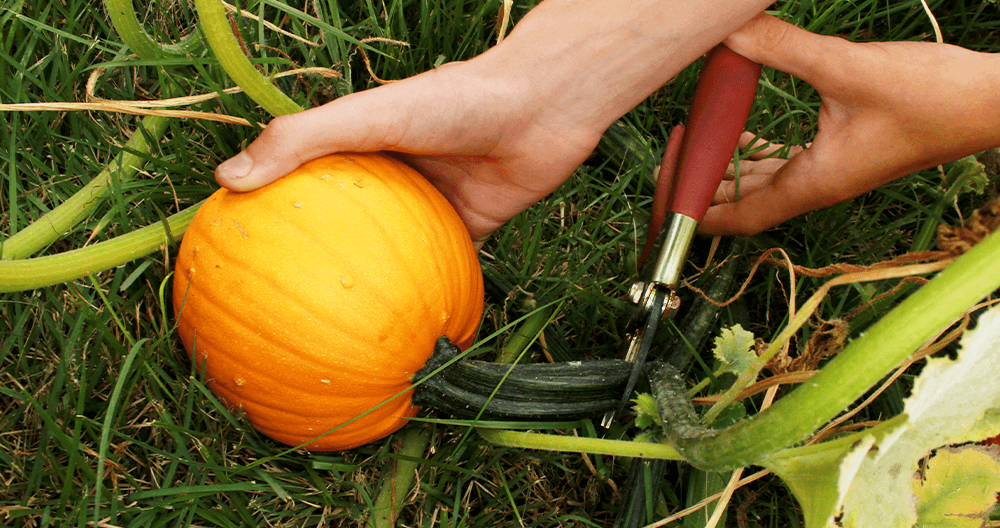
White pumpkin uses and recipes
Pumpkins are not only for decoration; they can also be used in many different ways. Here are some ideas on how to use white pumpkins:
- Use them as Halloween decorations
White pumpkins make incredible Halloween decorations. You can use them as decorations for a frightening display or carve them into jack-o-lanterns. - Make a pumpkin pie
Pumpkin pies are a popular fall treat. You can use white pumpkins to make a delicious pumpkin pie. Simply roast the pumpkin, puree it, and then use it in your favorite recipe. - Roast the seeds
Pumpkin seeds are a healthy and tasty snack. You can roast them in the oven with oil and salt. Roasted pumpkin seeds are a great addition to a salad or standalone snack. - Use them in soups and stews
Pumpkin soup is a popular fall dish perfect for using white pumpkins. Pumpkins can also be used in soups and stews. Simply add diced pumpkin to your favorite recipe. - Make pumpkin butter
Pumpkin butter is a delicious spread that can be used on toast, crackers, or as a Dip. It’s easy to make and can be made with either white or orange pumpkins. - Use them in baking
Pumpkins can also be used in baking. Pumpkin bread and muffins are a delicious way to use pumpkins. You can also use pumpkin puree to make a variety of different desserts. - Add them to your favorite fall recipes
Pumpkins can be used in many different fall recipes. Add them to your favorite chili recipe or use them to make a fall-themed pasta dish. - Feed them to your animals
Pumpkins can also be fed to animals. Horses, cows, pigs, chickens, and ducks enjoy eating pumpkins. You can either feed them the whole pumpkin or give them pumpkin seeds.
Pumpkins are a versatile and delicious food that can be used in many different ways. With a little bit of creativity, you can use white pumpkins to make a variety of different dishes.
Pests and Diseases
Well, it’s challenging to take care of the plant if it gets pests and diseases. As we all know, the pumpkin is a plant that grows on the ground and is a favorite place for some pests to live and reproduce. So, you must keep an eye on the plant and take action.
The most common pests that affect pumpkins are:
Aphids
Aphids are small, pear-shaped insects that suck the sap from plants. They are often found in large groups on the undersides of leaves. Aphids can cause leaves to be yellow and deform.

Cucumber Beetles
Cucumber beetles are small, yellow-and-black striped insects. They feed on the leaves and flowers of plants and can cause extensive damage to a pumpkin plant.

Cutworms
Cutworms are tiny, grayish-brown caterpillars. They feed on the leaves and stems of plants. Cutworms can cause significant damage to a pumpkin plant.

Powdery Mildew
Powdery mildew is a white, powdery fungus. It grows on the leaves and stems of plants. Powdery mildew can cause the leaves of a pumpkin plant to turn yellow and fall off.

Different types of white pumpkins
There are many different types of white pumpkins, each with its own unique appearance. Some of the most popular varieties include:
White Ghost pumpkin
As mentioned above, the White Ghost pumpkin is the most popular type of white pumpkin. It gets its name from its pale white skin, which is said to resemble a ghost.
The White Ghost pumpkin was first produced in 2004 by the Great White Pumpkin Company. It is one of the largest varieties of white pumpkins, with some specimens weighing over 30 pounds (13.6 kg). White Ghost pumpkins are often used for decoration, as their pale skin makes them perfect for creating spooky Halloween displays. However, some people enjoy eating them, as their flesh is sweet and nutritious.
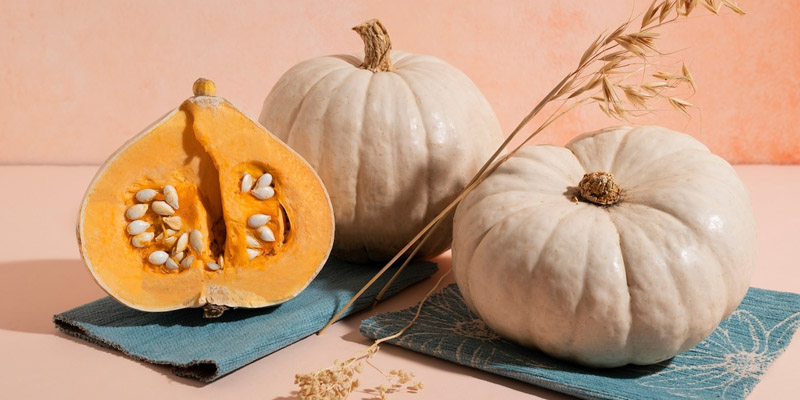
Snowball pumpkin
Snowball pumpkins are native to North America and have been cultivated for centuries. They were once a popular type of pumpkin for making pies, but they have fallen out of favor in recent years. This pumpkin gets its name from its round, white appearance, as you can infer from the name. It is one of the smaller varieties of white pumpkins, with most specimens only weighing around 1-2 pounds (0.5-1 kg).
Today, Snowball pumpkins are most commonly used for decoration. Their small size and white color make them perfect for creating beautiful fall displays.

Casper pumpkin
The Casper pumpkin is a white pumpkin that is native to Mexico. The Casper pumpkin is one of the smaller varieties of white pumpkins. It is different from other white pumpkins because it has smooth, waxy skin. The Casper pumpkin was first introduced to the United States in the early 2000s, and quickly became famous for its unique appearance.
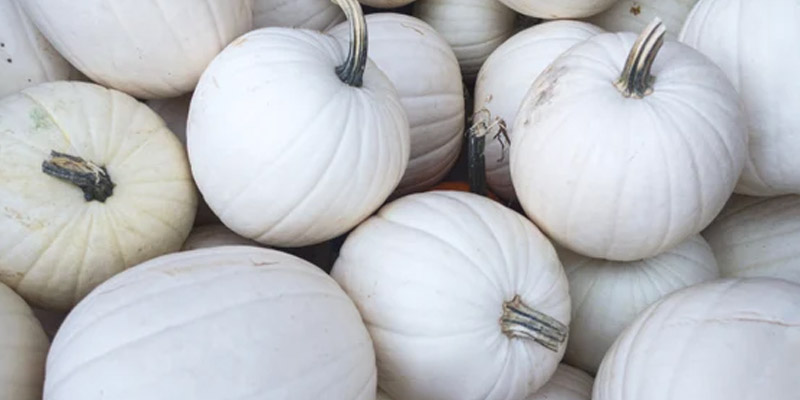
Polar Bear pumpkin
The Polar Bear pumpkin is a white pumpkin that gets its name from its white fur-like coating. The Polar Bear pumpkin is native to North America and was first cultivated by the Cherokee people. It is one of the smaller varieties of white pumpkins and is often used for decoration, as its white fur-like coating makes it perfect for creating festive displays.
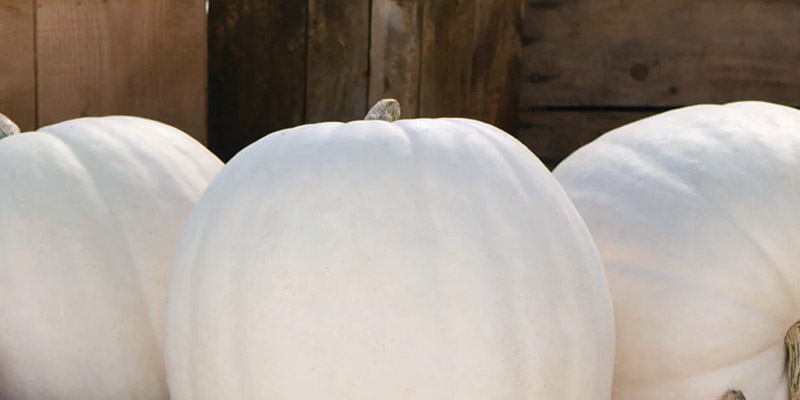
Baby Boo pumpkin
The Baby Boo pumpkin is a small, white pumpkin that was first introduced in the 1990s. The Baby Boo pumpkin gets its name from its small size and white color. It is often used to create beautiful fall displays. However, when it comes to the taste of this pumpkin, people seem to either love it or hate it. Some people find the flesh sweet and delicious, while others find it bland and unappealing.
Regardless of its taste, the Baby Boo pumpkin is a popular choice for decoration due to its small size and white color.
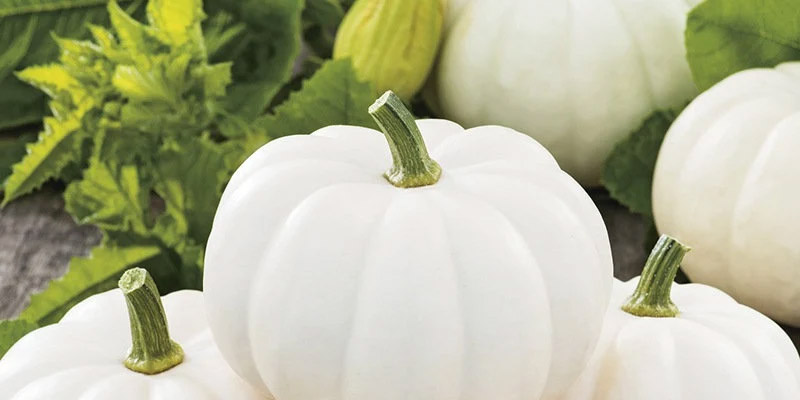
Lumina pumpkin
Lumina Pumpkin is a white pumpkin created by crossing two different varieties of pumpkins. The Lumina pumpkin is native to North America and was first introduced in the early 2000s. It is one of the smaller varieties of white pumpkins, with most specimens only weighing around 2-3 pounds (0.9-1.4 kg). However, some people enjoy eating them, as their flesh is sweet and nutritious.
The Lumina pumpkin is a popular choice for decoration. When fully grown, the Lumina pumpkin is about the size of a cantaloupe, and has smooth, white skin and orange flesh.
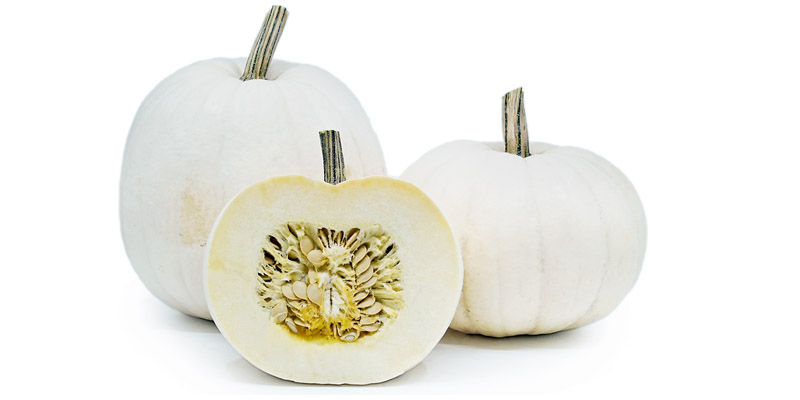
Frequently Asked Question
Can white pumpkins be used in the same way as orange pumpkins?
White pumpkins can be used the same way as orange ones. They can be carved into jack-o’-lanterns, used in baking, or made into soups and stews. However, white pumpkins are not as common as orange pumpkins, so they may be harder to find.
When to harvest white pumpkins
In late September or early October, pumpkins are often ready for harvest. Ideally, it would help if you waited until the pumpkin is fully mature and the skin is hard to the touch. You can also check the stem; if it’s brown and dry, the pumpkin is ready to be picked.
What is the best way to store white pumpkins?
White pumpkins can be kept in a dry, cool environment. If properly preserved, they will last for several months. In addition, white pumpkins can be frozen for longer-term storage.
Where do white pumpkins come from?
White pumpkins are native to North America. The Native Americans first cultivated them. White pumpkins are now grown in many parts of the world, including Europe, Asia, and Australia.
Why do these Pumpkins turn yellow?
If the pumpkin plant is not getting enough water, the leaves will start to turn yellow. Pumpkins need about 1 inch (2.5 cm) of water per week. The leaves will also turn yellow if the plant gets too much water. Too much water can cause the pumpkin to rot. If the leaves turn yellow, check the soil to see if it is too wet or too dry. Adjust the watering accordingly.
Are you trying to grow pumpkins in your garden? Read our Ultimate pumpkin growing tips: How to grow pumpkin seeds!
Related Posts


